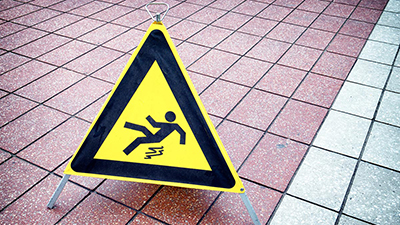
Source: hbr.org
We know that a safe and healthy working environment improves productivity and quality of work. It also ensures that workers are free from injury, accidents and ill health brought on by unsafe practices and processes in the workplace. How many of us are aware of this?
Take a look around your work area – is it “safe” and “healthy”? Do you suffer from aches and pains at the end of the workday? Are you now in more pain than when you first started working months or years ago? Are your colleagues having the same issues? You may think it is related to ageing, but it is likely that some, if not most, of it is contributed by your working environment.
How does one make the workplace better? We can begin by clarifying a few terms. First of all: hazard. A hazard is anything with the potential to cause harm. Examples of hazards are chemicals, heat, electricity or even the use of a ladder. Secondly: risk. A risk is the likelihood of a hazard affecting us. The level of risk is related to the severity of its consequences.
Here’s an analogy to better illustrate risk and hazard. A hungry lion (the hazard) is on the loose. It sees a man walking in front of him. What do you think will happen (the risk) to the man? Obviously, the lion has found its lunch (the consequence)! In another scenario, the lion is hungry but this time it’s in a locked cage. A man walks towards the cage but stops far enough away from the reach of the lion. In this case, the lion will still be hungry and most likely angry!
If a hazard is recognised early, given a thorough evaluation and effectively controlled, we can minimise or eliminate risk. This is known as HIRARC, which is short for Hazard Identification, Risk Assessment and Risk Control. The following are the basic steps for a safe and healthy workplace – it’s as easy as 1,2,3:
Hazard Identification
This is the most important step in HIRARC as it isolates the hazards as well as workers at risk. There are many ways to approach this.
- Scrutinise the event/injury or medical records available (may require permission). This helps to detect the area, activity or substance that may have resulted in the event/injury and also identify contributing factors like poor lighting, inadequate supervision or maintenance issues.
- Observe the workplace activities. This should be carried out during routine and non-routine activities.
- Use a checklist for thorough inspection. A job hazard analysis (JHA) can be used for a specific hazardous activity.
Hazard identification basically clarifies the hazardous job/task/element. It is then broken down into key steps in which recommendations to reduce or eliminate the identified problem areas.
Information on hazards can be obtained from the relevant agencies like DOSH (Department of Occupational Safety and Health). It is important to note that only significant hazards that can result in harm to workers should be identified and trivial hazards should be ignored.
Risk Assessment
Once the significant hazards are identified, they need to be prioritised. Highly hazardous elements have to be managed urgently over those classified as medium or low. Risk evaluation is done using a method called qualitative risk assessment. It judges the risk level in terms of likelihood of an incident and the severity of its consequences, according to the formula “Risk = Likelihood X Severity”. There should be a fixed timeline for remedial action after the assessment. Training is necessary in order to perform risk assessment.
Risk Control
The third step in HIRARC is to control the risk identified above. Before recommending new or improved control measures, the preexisting mechanism must be examined. Is it adequate, properly maintained or appropriate for the workplace? If not, then recommendations to improve risk control will be given.
Some general principles of prevention/control that can be used are:
- Avoiding risks
- Evaluating unavoidable risks
- Managing the source of the risk
- Adapting work to the individual
- Using technology
- Replacing the dangerous with the less dangerous
- Adequate information, instruction, training and supervision to employees
The process above does not end in 3 steps. All assessments must be recorded and kept for reference during a review by the management. Only significant hazards and recommendations need to be archived. They should include details of workers/people affected by the hazards, the existing control measures and their effectiveness. The review date and new control measure (if any) should also be included. It is important for the assessor to review all recommendations in a timely manner to ensure that not only that the recommendations are carried out but that they are also appropriate and useful.
Making your workplace safe and healthy is possible and should be made a priority. The main benefits are reduction or elimination of accidents, injuries and diseases among workers. Simply put, come to work healthy and retire safely and in good health.
Dr Lim Jac Fang is an occupational health specialist based in Sabah and a permanent Malaysian Medical Gazette Columnist. Find out more about him at The Team page.
References:
- The Management of Safety and Health at Work Regulations 1999 Schedule 1 (HSE)
- HSE Booklet 5 Steps to Risk Assessment
[This article belongs to The Malaysian Medical Gazette. Any republication (online or offline) without written permission from The Malaysian Medical Gazette is prohibited.]
